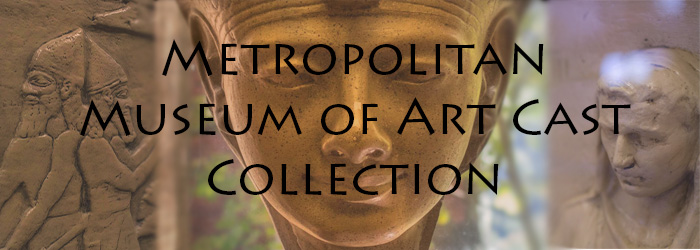
Description
Plaster cast of a relief depicting oxen being led to a sacrificial rite. Site of origin is the Tomb of Ptahhotep, Saqqara necropolis, Memphis, Egypt, circa 2494-2345 BCE (Old Kingdom, Dynasty V).
Publication Date
1978
Type of Artwork
Relief
Time Period/Geographical Region
Ancient Egypt
Height (cm/in)
60.94 cm / 24 in
Width (cm/in)
58.42 cm / 23 in
Depth (cm/in)
40.64 cm / 16 in
Disciplines
Ancient History, Greek and Roman through Late Antiquity | Sculpture
Recommended Citation
Morehead State University. Camden-Carroll Library., "Relief from the Tomb of Ptahhotep: Oxen Led to the Sacrifice" (1978). Metropolitan Museum of Art Cast Collection. 38.
https://scholarworks.moreheadstate.edu/metropolitan_art_collection/38
Files
Download Image (99 KB)


Comments
Oxen are being led to sacrifice in a sculpted scene from an Old Kingdom Egyptian tomb known as a mastaba. The tomb was created for Ptahhotep, an Egyptian vizier, or high-ranking political advisor. This relief is found along the same wall in the tomb as another relief in MSU's cast collection, one of Domestic Geese and Cranes. The Egyptians placed great significance in the customs and rituals surrounding death and burial, and the tombs of illustrious members of society like Ptahhotep were decorated with scenes from daily life as well as images of the gods and of the dead preparing for their journey to the afterlife. The 1908 cast catalog from the Metropolitan Museum of Art incorrectly lists these reliefs as being from the Tomb of Ti, another important political official, at Saqqara.